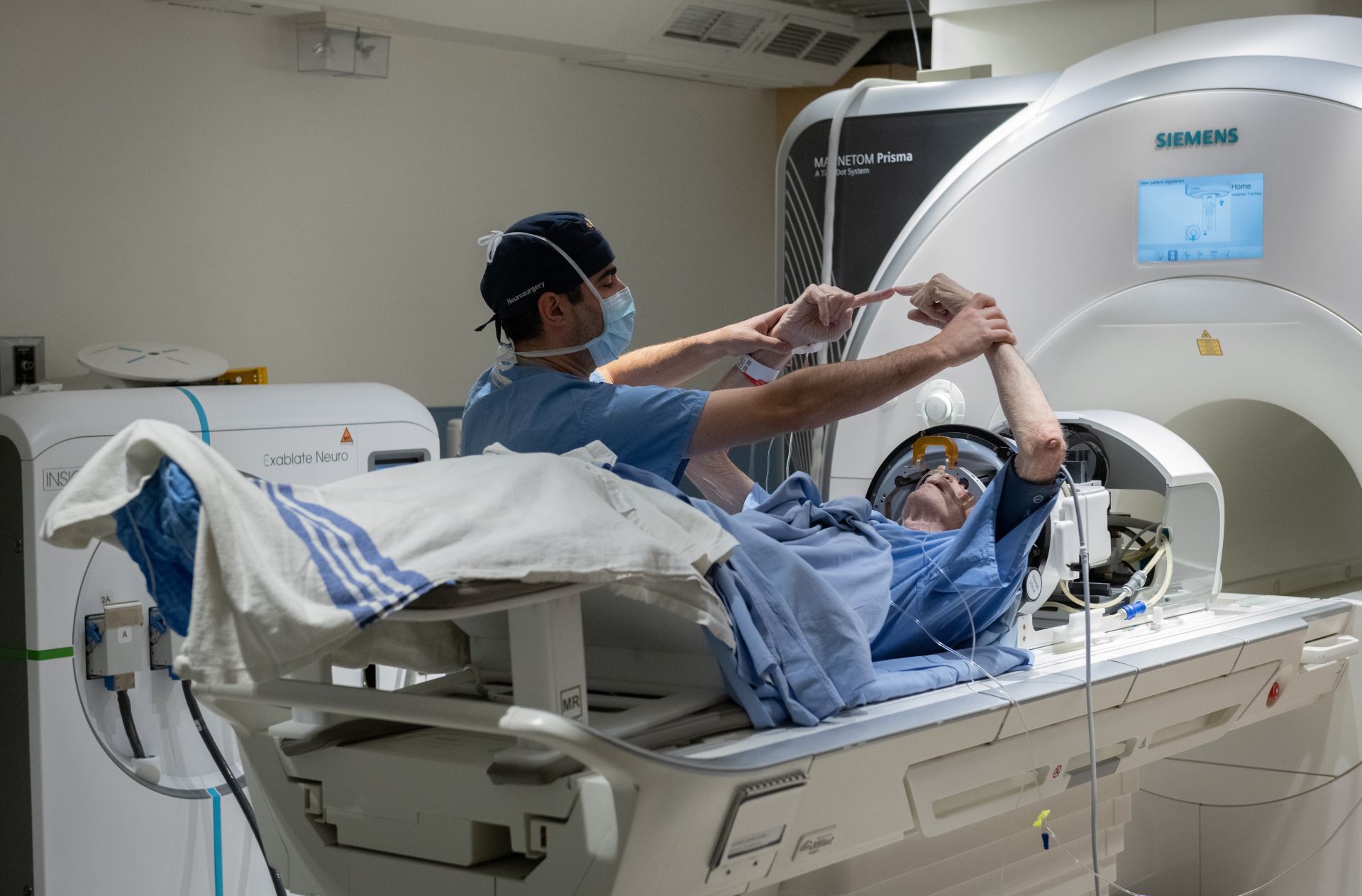300th patient with essential tremor treated with focused ultrasound at Sunnybrook
Essential tremor is a debilitating neurological disease that can cause severe tremors or shaking in a person’s body, affecting their ability to eat, drink, write, and enjoy everyday activities.
In October, Chris Smith was the 300th patient at Sunnybrook to receive focused ultrasound treatment for essential tremor.
“I had tremor on both sides,” he says. “Although I am right-handed, the tremor on my left side was much more severe and debilitating, so I was very pleased that the decision was made to treat the left side.”
This innovative approach, pioneered by Sunnybrook researchers, can help improve tremor and a patient’s quality of life, by using ultrasound waves to target and treat areas deep in the brain, rather than by cutting or scalpels.
“Focused ultrasound has revolutionized how we approach the treatment of essential tremor, and over the years has expanded to include Parkinson’s and Alzheimer’s disease, brain cancer, depression, and other brain disorders,” says Dr. Nir Lipsman, neurosurgeon and director of the Harquail Centre for Neuromodulation. “For us as a team, from the moment we meet patients on the morning of their procedure to the time they leave hospital, we feel incredibly privileged to be on this journey with them, and help provide these life-changing treatments.”
After treatment, Chris was given a glass of water to drink. He was also asked to put pen to paper and follow the shape of a spiral. Prior to treatment, the tasks would be challenging because of the tremors.
“The results for me were quite stunning,” explains Chris. “Midway through the procedure, I was able to hold a glass of water without spilling and draw a pretty good spiral, both impossible before. My left side tremor had not only diminished, but entirely disappeared! A shocking difference from before the focused ultrasound treatment.”
He goes on to explain how he’s noticed several changes in his day-to-day activities since receiving treatment.
“I can use my left hand to hold the phone or a book. I can sleep on my left side, which is my accustomed side. I can eat more comfortably because I have more control at the table. I am better able to indulge in my hobbies such as model building or playing the piano,” he says.
“Many thanks to the Sunnybrook team including Nadia, and to Dr. Lipsman for taking on this challenge and for the supportive attention I received throughout the process. My wife and family are thrilled for me!”












